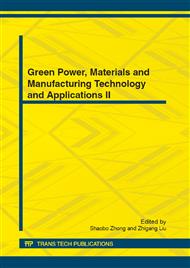[1]
X.F. LI, H. Liu. A survey of sound source localization for robot audition, CAAI Transactions on Intelligent Systems, vol 7(1) (2012), pp.1-11.
Google Scholar
[2]
SUN Hao, YANG Peng, LIU Zuojun, et al. Microphone array based auditory localization for rescue robot. Chinese Control and Decision Conference. Taiyuan, China (2011).
DOI: 10.1109/ccdc.2011.5968253
Google Scholar
[3]
X.H. SHENG, Y. H HU. Maximum likelihood multiple-source localization using acoustic energy measurements with wireless sensor networks. IEEE Transactions on Signal Processing, vol 53 (1) (2005), p.44~53.
DOI: 10.1109/tsp.2004.838930
Google Scholar
[4]
N. KITAKOGA, T. OHTSUKI. Distributed em algorithms for acoustic source localization in sensor networks. IEEE Vehicular Technology Conference (2006).
DOI: 10.1109/vtcf.2006.513
Google Scholar
[5]
F. ASANO, H. ASOH, and T. MATSUI. Sound source localization and separation in near field. IEICE Transactions on Fundamentals of Electronics, E83-A(11)(2000), pp.2286-2294.
Google Scholar
[6]
T. AJDLER, I. KOZINTSEV, and R. LIENHART et al. Acoustic source localization in distributed sensor networks. Conference Record -Asilomar Conference on Signals, Systems and Computers, vol 2(2004), pp.1328-1332.
DOI: 10.1109/acssc.2004.1399368
Google Scholar
[7]
C.H. KNAPP, G.C. CARTER. The generalized correlation method for estimation of time delay. IEEE Transactions on Acoustics, Speech and Signal Processing, vol 24(4) (1976), 320-327.
DOI: 10.1109/tassp.1976.1162830
Google Scholar
[8]
G.C. CARTER. Time Delay Estimation for passive sonar signal Processing. IEEE Transactions on Acoustics, Speech and Signal Processing, ASSP-29(3)(1981), pp.463-470.
DOI: 10.1109/tassp.1981.1163560
Google Scholar
[9]
M.S. BRANDSTEIN, J.E. BRANDSTEIN, and Silverman H.F. A closed-form location estimator for use with room environment microphone arrays. IEEE Transactions on Acoustics, Speech and Audio Processing, vol 5(1)(1997) pp.45-50.
DOI: 10.1109/89.554268
Google Scholar
[10]
B. LEE , J.S. CHOI. Multi-source sound localization using the competitive K-means clustering. IEEE Conference on Emerging Technologies and Factory Automation. Bilbao, Spain(2010). pp.1-7.
DOI: 10.1109/etfa.2010.5641169
Google Scholar


